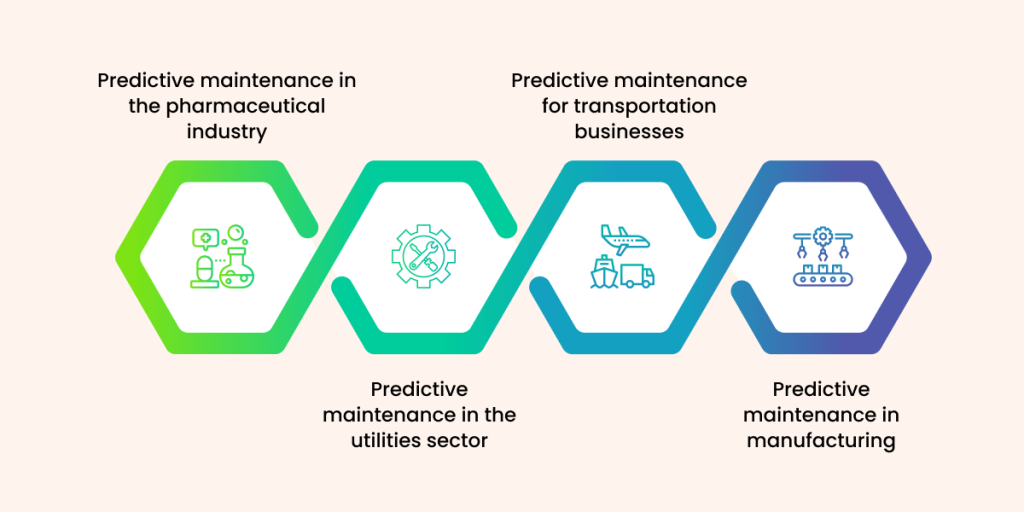With connected equipment and fleets, rising customer demands, and receding room for error, predictive maintenance in industry 4.0 is the future. Fixing before it breaks – that’s the mindset manufacturers, healthcare, and pharmaceuticals, among other sectors, will have to adopt in order to thrive. There is reason, there is opportunity, and there are platforms and solutions to make it happen. This blog deep dives into all of it.
Your business runs on the equipment, plant, fleet, and devices you use to build and ship things for your customers. When one of them fails, you can expect a delay at best and a shutdown at worst. Typically, these failures cause a waterfall effect – minor issues snowballing into supply chain failures and customer dissatisfaction.
Reactive maintenance, an old-school approach to maintenance and repair in manufacturing, among other sectors, has proven detrimental to business. It is especially true for large-scale industrial organizations that rely on thousands of assets and equipment daily.
For this reason, organizations are increasingly shifting to predictive maintenance in industry 4.0, among other mission-critical sectors. It enables them to reduce unanticipated failures and outages and increase the asset life cycle, ultimately supercharging growth and decreasing operational costs.
But it is easier said than done. Equipment problems aren’t always visible to the human eye. The preventive maintenance process requires organizations to invest in the right technologies and platforms to help relevant staff gain 360-degree visibility into asset performance and potential issues.
But before we get into the nitty-gritty, let’s understand the basics.
How IoT addresses fleet management challenges
Predictive maintenance processes involve condition monitoring through real-time data, which is made possible with the Industrial Internet of Things (IIoT). A vital element of the industry 4.0 revolution, it aids dynamic operational efficiency improvements, detects potential issues, and helps businesses address them before significant equipment failures.
Preventive maintenance in the manufacturing industry relies on high-speed data processing and high-end algorithms. It is typically not possible with local implementations within SCADA. Predictive maintenance in industry 4.0 is largely IoT-dependent. An IoT-based solution allows organizations to store and analyze terabytes of equipment data run and machine learning algorithms to forecast failures and hazards and predict when industrial equipment is likely to fail.
Why IoT-based predictive maintenance in industry 4.0 is the future
Did you know predictive maintenance is all set to hit USD 111.34 billion by 2030? That’s a CAGR of a whopping 26.2%.
This growth is not without reason.
Predictive maintenance in industry 4.0 supports industries in proactive decisions about repair and maintenance. It regulates the machinery lifecycle and physical condition and improves workforce efficiency.
But how is all this made possible? The preventive maintenance process is designed to analyze the nature and degree of an organization’s assets and equipment performance through real-time data ingestion. An analytics layer extracts insights. And machine learning algorithms are used to train the platform to identify errors of all types. Finally, dashboards produce reports on the machine’s current and upcoming state. Ultimately, businesses using preventive maintenance save time and money and say goodbye to supply chain problems.
Often, organizations want to run predictive maintenance but simply don’t have the right-sized staffing and skills to make it happen. A UI-first and highly accessible IoT-based predictive maintenance solution that identifies not only potential issues but also delivers preventive and prescriptive corrections to supercharge your workforce’s ability to keep those wheels turning – constantly.
Without preventive maintenance in industry 4.0, you miss out on the following vital advantages:
- Remote and continuous monitoring of every equipment to ensure not just uptime but also reduced safety incidents
- Reduced to nil failure and downtime recovery costs
- Improved transparency of equipment and asset condition for scrapping and new purchase decisions
Predictive maintenance in industry 4.0 can help your staff manage large-scale machine units to keep them functional frictionlessly. Isn’t that the ultimate goal?
How predictive maintenance in industry 4.0 can boost your uptime, equipment life, efficiencies and revenue

The use of IoT in a preventive maintenance process is not limited to large machinery. It includes every tiny equipment and device component that keeps your plant and supply chain operational.
Here are some industries that have benefitted the most from predictive maintenance in industry 4.0:
1. Predictive maintenance in the pharmaceutical industry: The benefits
Pharmaceutical products must be stored at prescribed temperatures to maintain their life and integrity. Using refrigeration sensors, predictive maintenance solutions help pharmaceutical manufacturers gauge the signs of equipment malfunction and take proactive action.
This makes predictive maintenance mission-critical for the life and safety of the end user – the patient. It also helps save massive amounts of medicines from wastage and inadvertent expiry. With medical supplies reaching on time and in appropriate condition, the entire healthcare ecosystem – from pharmacy to plant, hospital to neighborhood clinics – can deliver timely and high-quality care to those who need it.
2. Predictive maintenance in the utilities sector: The benefits
Utility companies that use at least one IoT-enabled predictive maintenance process can prevent power outages and meet the needs of their customers.
Predictive maintenance solutions integrate with AI and sensor data to identify factors that lead to outages. It helps utility companies determine the best maintenance plan to prevent power failures.
3. Predictive maintenance for transportation businesses: The benefits
Failure of even a single fleet and vehicle equipment can result in time-consuming and costly repairs and shipment delays. With predictive maintenance in industry 4.0, transportation companies leverage sensor data to detect issues and schedule prompt maintenance activities ahead of time.
Predictive maintenance solutions also enable these companies to monitor fleet and driver data, extract reports, and predict ETA for fleet equipment of similar age and condition. Predictive maintenance solutions also enable these companies to monitor fleet and driver data, extract reports, and predict ETA for fleet equipment of similar age and condition.
4. Predictive maintenance in manufacturing: The benefits
Predictive maintenance in the manufacturing industry has helped product manufacturers monitor equipment temperature and prevent overheating, which may cause outages and unplanned downtime.
CMMS maintenance software integrates data and creates a maintenance plan to ensure continuous throughput. This, in turn, helps companies plan production lines and supply chains in advance and provides consistent, failsafe production outcomes.
But why IoT for predictive maintenance in industry 4.0?
At the heart of any preventive maintenance process and solution is a massive amount of equipment data, millions of sensors collecting this data, seasoned analytics capabilities, and AI and machine learning algorithms. These capabilities can simply not be achieved with local tools and manual methods. Of course, a team of analysts and seasoned repairmen can help with some of it, but they would need high skills, and the time cost would be extensive.
IoT-based preventive maintenance solutions allow businesses to supercharge their human workforce’s capabilities with technology intervention. An IoT-based solution can pinpoint specific issues, save time and effort, and let your staff take action instead of manually evaluating equipment status.
IoT enablement aids data analysis on assets, equipment, or machinery. Sensors and other instruments collect data, prepare dashboard reports on equipment status and predict issues and risks that need immediate attention to avoid outages and preventable downtime. IoT allows your equipment to transmit valuable data and insights through a comprehensive network of connected elements and sensors. Ultimately, it improves your organization’s uptime, efficiency, customer experience, supply chain, production outcomes, and more.
Kickstart preventive maintenance in industry 4.0 with Acuvate
With decades of experience working with manufacturers and Fortune 500 companies across North America, Europe, and APAC, Acuvate’s product team saw the urgent need for an accessible, lightweight yet ROI-heavy preventive maintenance solution. So our best IoT, ML, data and analytics minds got together to build one.
And this is what businesses like yours are achieving with Acuvate’s IoT-based intelligent predictive maintenance solution every single day:
- Improved functioning of assets and equipment with continuous measurement of performance indicators of individual components. Our solution achieves this with large-scale sensorization to help businesses increase the life expectancy of each asset
- Reduction in equipment downtime and seamless and prompt maintenance schedules by monitoring assets 24x7x365. This results in low maintenance costs, a significant boost in workforce productivity, and reduced recovery costs and time
- Higher production capacity with real-time monitoring of equipment and assets and granular attention to detail, so a broken bolt does not cause a broken supply chain
- Reduce overtime costs and optimal maintenance resource utilization with automated workflow and seamless integration of individual machines for high visibility
- Improved workforce safety with the ability to identify potential safety hazards due to equipment failure
- Higher sustainability index and regulatory compliance by enabling manufacturers and other industrial sectors to identify and prevent biohazards before they happen
Acuvate’s intelligent, IoT-based preventive maintenance solution at work: The critical use cases
The traditional mindset among businesses and consumers is that IoT’s impact is limited to smart homes and smart cars. This couldn’t be further from the truth.
Let’s now see how Acuvate’s IoT-based preventive maintenance solution is being put to use across industry sectors to help customers achieve significant goals.
Guard railing control valves
Acuvate’s preventive maintenance solution is helping industries achieve real-time monitoring and optimization of control valves.
Control valves perform the critical function of regulating mission-critical parameters like pressure, temperature, and flow rate. These factors significantly contribute to the overall operational efficiency of the plant. In addition, with real-time monitoring, businesses are preventing leaks, voltage sags, and safety hazards.
Key takeaway: Benefits of IoT-based preventive valve maintenance
- High functioning and operational efficiency
- Lean maintenance and time cost
- Efficient valve maintenance
- Minimal error-prone manual intervention
- Improved worker and site safety
Improving backflow valve tracking and monitoring
IoT-enabled sensors help in tracking the position of backflow valves and test pressure. It enables organizations to receive timely alerts in case of valve failure and assess and correct the problem in real time.
A modern metropolitan is using this solution to prevent water supply contamination, deliver high-quality and safe water to citizens, and avoid costly regulatory fines. Organizations are also eliminating unpleasant surprises from the typical annual backflow preventer inspections, reducing instances of unexpected drops in pressure, and saying goodbye to flooding with timely triggered shutdowns.
Key takeaway: Benefits of IoT-based preventive backflow monitoring
- Continuously measure water pressure
- Trigger notifications for water supply shutdowns to prevent flooding instances
- Remote monitoring and control of backflow pressure
- Reduced water contamination instances
- Improve site, city, workforce and citizen safety
The bottom line: Preventive maintenance in industry 4.0 - the time is now
With IoT superpowers, overcome equipment management issues and embrace predictive maintenance in industry 4.0. Smooth user experience, complete visibility, and staggering operational efficiency and uptime await.
Take that first step towards protecting your equipment and safeguarding your supply chain.



